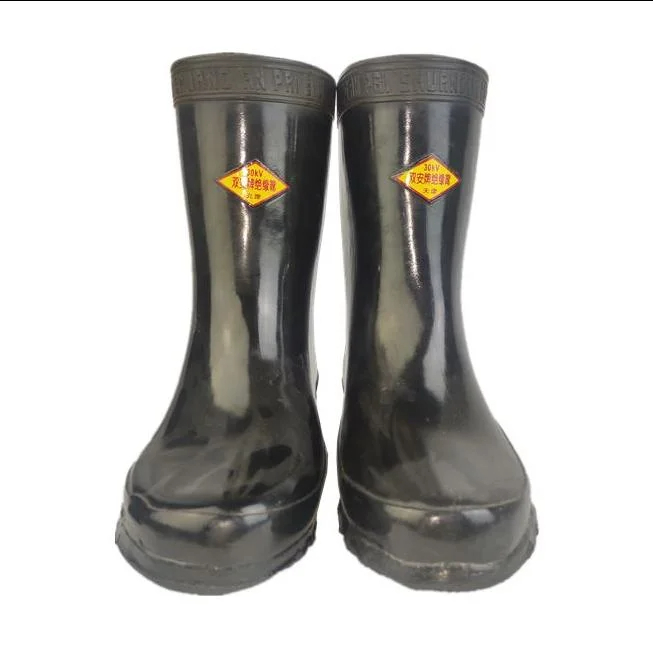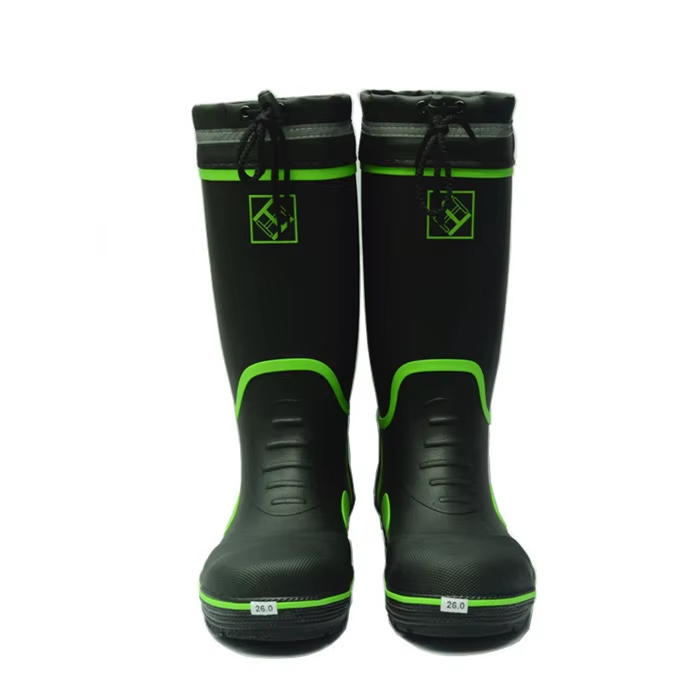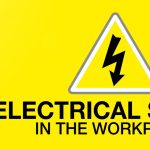Importance of Safety Footwear for Electrical Work
Ensuring protection in high-risk work environments is crucial. For electrical tasks, choosing the right footwear is not optional but essential. Here’s why safety shoes matter for electrical work:
- Prevent Electrical Shocks: High voltage electrical safety shoes are designed to insulate workers from the ground. They reduce the risk of electric shock, which can be fatal.
- Protect Against Burns: Accidental contact with live wires or equipment can cause burns. Safety footwear with proper insulation guards against such injuries.
- Minimize Slipping Hazards: Electrical environments may have slick surfaces. Quality safety shoes provide better traction, preventing slips and falls.
- Support and Comfort: Standing or walking for long hours can be straining. Electrical safety shoes offer support, reducing fatigue and boosting productivity.
- Durability in Tough Conditions: Electrical work can be harsh on footwear. High voltage electrical safety shoes are built to withstand these conditions, lasting longer.
- Comply with Safety Standards: Regulated industries require adherence to safety norms. Safety footwear helps meet those mandates, ensuring worker and site compliance.
Remember, the right choice of high voltage electrical safety shoes goes beyond avoiding injuries. It is part of a comprehensive approach to personal protective equipment that significantly contributes to overall workplace safety.
Defining High Voltage: Understanding the Risks
When we talk about ‘high voltage’, we refer to an electric potential large enough to inflict harm on living organisms. In an electrical work context, this typically includes voltages above 600 volts. Working with or near high voltage equipment is inherently dangerous and poses several risks:
- Electrocution: The most immediate and serious threat is electrocution, which can result from direct contact with high voltage sources.
- Arc Flash: This deadly phenomenon occurs when a flashover of electric current leaves its intended path and travels through air to another voltage phase or to the ground.
- Fires and Explosions: High voltage can generate sparks, which may ignite flammable materials, leading to fires or explosions.
- Thermal Burns: The intense heat from an electrical arc can cause severe burns, even without direct contact.
- Injury from Blasts: The force from an arc blast can throw a worker across a room, potentially causing injury from the fall or from flying debris.
Understanding these risks highlights the importance of using protective gear, including high voltage electrical safety shoes. These shoes are part of a critical safety system designed to safeguard workers from the hazards associated with high voltage electricity.

Key Features of High Voltage Electrical Safety Shoes
When selecting high voltage electrical safety shoes, certain features are non-negotiable to ensure maximum protection. Below are the key characteristics that set apart the best safety footwear in electrical work:
- Electrical Insulation: A core feature, it prevents the flow of electric current through the body. High-quality insulation is vital in any safety shoe.
- Robust Soles: The soles should resist punctures and provide excellent traction to prevent slips.
- Durable Material: Materials need to withstand tough conditions without degrading, ensuring long-term protection.
- Ergonomic Design: Proper fit and comfort reduce fatigue and allow for better mobility and concentration.
- Shock Absorption: This helps cushion the feet during movement, adding to comfort and support throughout lengthy work periods.
- Heat Resistant: Materials that resist heat protect against burns from electrical arcs and hot surfaces.
- Waterproof Qualities: To prevent moisture from compromising the insulation, waterproofing is essential, especially in wet conditions.
- Reinforced Toe Caps: Often made of steel, these protect the feet from heavy objects or compressive forces.
Every pair of high voltage electrical safety shoes must be chosen with these critical features in mind. They collectively contribute to a safer work environment for those dealing with electrical hazards daily.
Standards and Certification for Electrical Safety Footwear
When dealing with high voltage electricity, adhering to strict standards and certifications is not just important – it’s vital. Such measures ensure that high voltage electrical safety shoes are up to the task of keeping workers safe. Here are the key points to understand about standards and certification for electrical safety footwear:
- OSHA Requirements: The Occupational Safety and Health Administration (OSHA) sets basic requirements for protective footwear. Ensure any pair of shoes meets these guidelines.
- ASTM Standards: The American Society for Testing and Materials (ASTM) provides specifications for safety shoes. Look for ASTM F2413, the standard for the performance of protective toe footwear.
- EN ISO Certifications: Globally, the EN ISO 20345 standard outlines basic requirements for safety footwear used in work environments.
- Electrical Hazard (EH) Rating: Safety shoes with this rating provide protection against electrical risks. They must withstand applications up to 18,000 volts.
- Dielectric (DI) Marking: Such footwear is tested to ensure it doesn’t conduct electricity, even when submerged in water.
- Testing and Labeling: Always check for proper labeling stating that the footwear has passed the necessary electrical tests.
It is crucial to understand these standards when choosing the right high voltage electrical safety shoe. Not every shoe is created equal, and those with proper certification and testing provide peace of mind and actual safety benefits. Make sure your selection is verified to protect against the specific hazards of your working environment.

How to Choose the Right Electrical Safety Shoes
Choosing the right electrical safety shoes is crucial for ensuring workplace safety. Here are the steps to select the best pair for your needs:
- Assess Work Environment Risks: Consider the specific hazards in your workplace. If you work with high voltage, ensure the footwear can handle the voltage levels.
- Verify Certification Standards: Look for shoes that meet OSHA, ASTM, or EN ISO standards. Shoes should have an EH rating and proper labeling.
- Evaluate Shoe Features: Check for key features like electrical insulation, durable materials, and reinforced toe caps. Don’t compromise on quality.
- Consider Comfort and Fit: Comfort affects productivity. Try on different sizes to find shoes that fit well and feel good, even after hours of wear.
- Account for Workplace Conditions: Think about your work conditions. If you work in wet areas, choose waterproof shoes. For hot environments, opt for heat-resistant materials.
- Check for Additional Protection: Some shoes offer extra protection like puncture-resistant soles or slip-resistant treads. Decide if you need these features.
- Read User Reviews: Others’ experiences can guide you. Look for reviews from workers in similar jobs to see how shoes perform in real-world conditions.
- Set a Budget: Safety should not be compromised, but consider cost. Balance the need for high-quality protection with what you can afford.
Remember, the right high voltage electrical safety shoes protect you from shocks, burns, and slips. They also ensure you can work comfortably and comply with safety regulations. Take time to make an informed choice.
Maintenance and Care of Electrical Safety Footwear
Proper maintenance and care are essential for the longevity and performance of high voltage electrical safety shoes. Here’s how to keep your safety footwear in top condition:
- Regular Inspection: Before each use, inspect your safety shoes for signs of wear or damage. Look for cracks, tears, or worn soles that could compromise safety.
- Clean Regularly: Remove dirt, debris, and contaminants after each shift. Use a soft brush and wipe them with a damp cloth to maintain the material quality.
- Dry Shoes Properly: If your safety shoes get wet, let them air dry away from direct heat sources. This helps preserve the insulation properties.
- Store Correctly: Keep your shoes in a cool, dry place when not in use. Avoid exposure to extreme temperatures or sunlight that can degrade materials.
- Rotate Pairs: If possible, use multiple pairs of safety shoes in rotation. This strategy reduces wear and tear and extends the lifespan of each pair.
- Follow Manufacturer Instructions: Use recommended products for cleaning and maintenance. Each pair of high voltage electrical safety shoes may have specific care instructions.
- Replace When Needed: Don’t push your safety shoes beyond their safe service life. When they no longer offer proper protection, it’s time to replace them.
Taking the time to care for your high voltage electrical safety shoes ensures they remain reliable and protective. Implement a regular maintenance routine to keep your safety footwear in excellent working order.

Innovations and Advances in Safety Footwear Technology
The technology behind high voltage electrical safety shoes has seen significant advancements. These innovations make shoes safer, more comfortable, and more durable. Let’s explore some cutting-edge developments in safety footwear.
- Smart Safety Features: Modern safety shoes now include sensors. They detect hazards like excessive heat or sharp objects.
- Improved Insulating Materials: New composites offer better electrical insulation. These materials also make shoes lighter and more wear-resistant.
- Ergonomic Designs: Manufacturers design shoes to match foot shapes more precisely. This improves comfort and reduces fatigue on the job.
- Advanced Soles: Soles are now being made with new compounds. They provide improved grip on various surfaces to help prevent falls.
- Breathable Fabrics: Shoes with breathable materials keep feet dry and cool. This is important for those wearing them for long hours.
- Eco-friendly Options: There are now shoes made with sustainable materials. They still meet safety standards and are better for the environment.
With these innovations, high voltage electrical safety shoes provide both protection and ease of use. Workers can tackle high-risk tasks while staying safe and comfortable. Companies should keep an eye on these tech advancements. They could greatly enhance workplace safety.
Common Misconceptions About Electrical Safety Shoes
In the world of workplace safety, misinformation can lead to inadequate protection and serious risks. Even with high voltage electrical safety shoes, there are common misconceptions that need to be addressed. Understanding these misconceptions is critical for maintaining safety in high-risk electrical environments.
- Misconception 1: Any Work Boot Will Suffice. Not all work boots offer the electrical insulation needed for high voltage work. Look for shoes specifically designed to mitigate electrical hazards.
- Misconception 2: Electrical Safety Shoes Never Wear Out. Even the best high voltage electrical safety shoes wear out over time. Regular inspections and replacements are necessary for continued safety.
- Misconception 3: More Comfort Means Less Protection. Modern technology allows for comfortable safety shoes without compromising on protective features like insulation and reinforced toes.
- Misconception 4: Higher Price Equals Higher Safety. While quality often comes with a price, certified protection is what matters. Some affordable shoes meet all required safety standards.
- Misconception 5: Waterproof Means Fully Insulated. While water resistance is important, it does not guarantee electrical insulation. Ensure your shoes are rated for electrical hazards, not just water exposure.
By busting these myths and focusing on facts, workers and employers can better understand the importance of selecting and maintaining the right high voltage electrical safety shoes. This keen awareness will lead to safer practices and better protection against electrical risks.


